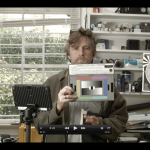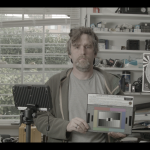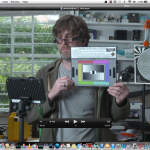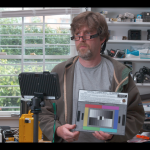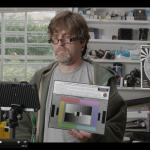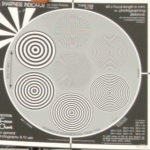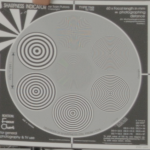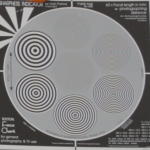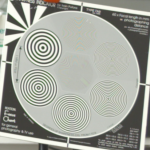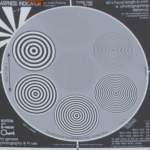Recently I decided to test some of the cameras I often use and or have access to. This included the Blackmagic Pocket Cinema Camera, a Sony F3, a Sony F5, A RED Epic MX. Obviously these cameras record natively in different codecs and resolutions, but I decided to even the playing field somewhat by using an external recorder (A Convergent Design Odyssey 7Q) so that everything is recorded in ProRes HQ, except for the Pocket Cinema Camera, which both records ProRes HQ natively, and also only outputs via HDMI (Highly Dodgy Media Interface) which I hate and prefer not to use. In all the tests I used the same lens, a RED 18-50mm short zoom, which was PL mount so it fit on all the cameras, which all had PL mounts on. Only for the Pocket Cinema camera did that significantly change the filed of view, as it is more of a super 16mm sensor size compared to 35mm sensor size of the others, which I compensated by zooming out to approximate the same field of view. The RED Epic of could natively can record up to 5K, but in this case I was just recording the 1080 output from a 4KHD recording, as 4KHD most closely matches 35mm format size. Also I did not record LOG on the F3 or F5, or output REDLog on the Epic. I did do both “Film” Rec and “Video” modes in the Pocket Cinema camera, but I did not run them through Resolve and color correct them as I might if I were actually using the camera. I wanted to look at the footage without doing any alterations other than what I might do in camera. For the F3 and F5 which have scene files that affect the look of the camera, I arbitrarily picked Abel Cine’s JR45Cine scene file for both, anticipating that those would be the scene files I would use were I to shoot with these cameras. For the Epic, I usually shoot with saturation set to 1.2 rather than the default 1.0, and that is what I did here. White balance was preset 5600 for all cameras. it was a somewhat unsettled day weather-wise, so take any ability to hold detail outside the window with a grain of salt as these shots were not all done simultaneously, as I was using one lens for all the cameras, and I had only two tripods in play.
Click on any below for full frame.
- BMPCC “Video” mode
- BMPCC “Film” mode
- Sony F3 JR45Cine
- Sony F5 JR45Cine
- RED Epic MX
No surprises here. Epic and F5 look the best. the F5 skin tones look a bit too red, but the whites look a little truer I think. the Black Magic Pocket Cinema Camera looks like it needs to be graded some whether you shoot video or film mode, and therefore makes me think if I am going to have to grade it anyway to make it look its best, I would shoot in “Film” mode in the future and take it through Resolve.
Below are enlargements of the focus target. again, no surprises. Sony F5 and RED Epic are the best for resolving and lack of moire. I was surprised slightly at the F3 moire, and not surprised but slightly disappointed on the Black Magic Pocket Cinema Camera’s sharpness performance. Again, this is off a screen grab from the ProRes HQ 1080 recording.
- BMPCC “Video”
- BMPCC “Film”
- RED Epic
- Sony F3
- Sony F5
If I were to pursue this test further, I would explore scene files in the F3 and F5 to see if I could get truer skin tones out of it while maintaining their ranges. The RED I might play with white balance a little bit, maybe a little lower to get rid of some of the tones that seem a bit too warm. My next test I had planned though was to test my RED Epic after it had it’s sensor upgraded to the “Dragon” sensor.

